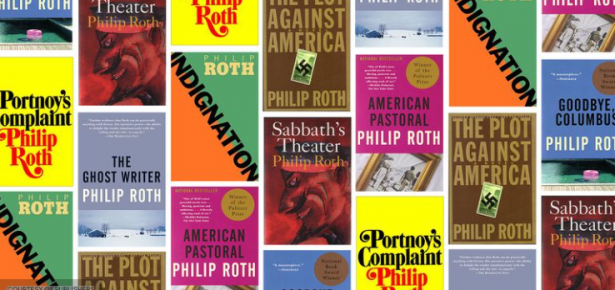
“Sheer Playfulness and Deadly Seriousness are my closest friends,” Philip Roth once famously said of his own work. The enduring appeal of this assertion derives in part from the fact that it so accurately captures the tone of Roth’s work: wry humor mingled with an unflinching appraisal of American life, satirical but compassionate treatment of individual characters, enthralled with life’s comic and tragic absurdities. Though his work engages with substantial topics (gender, race, nationality, politics, illness, death) Roth’s layered ironies and metafictional techniques continually invite us to question the reliability of his narrators’ perspectives, the veracity of their tales, and the degree to which they might act as conduits for Roth’s own self-examination. Often, just when we think we have a text unlocked, the cipher unencrypted, the ground shifts beneath our feet. It quickly becomes clear that we cannot actually distill Roth’s work down to any one “message”; his work cannot be decoded to reveal a set of fixed values or an incontrovertible truth. If anything, Roth’s work contests the idea that such a thing can exist.
It is because of this, rather than in spite of it, that readers and critics have continued for decades to engage in ongoing and lively debate about the meaning and significance of Roth’s work. Early controversy revolved around Roth’s representation of American Jews; over the years, a sustained point of contention surrounding Roth’s work has been its representation of gender. Indeed, the latter has been a focal point of my own research for over a decade, as I’ve remained fascinated by the complex and difficult ways Roth confronts masculinity in his work. Very little escapes the force of Roth’s dark humor, including his own protagonists, whose foibles and missteps are laid bare, who are undone by their mistakes, and who are often their own sharpest critics. Through his construction of flawed but captivating characters, Roth provides fertile ground for a variety of critical questions about his work. Are his self-aware narrators critiquing masculine norms? Are they reflecting them? Upholding them? Is Roth interrogating his own vulnerabilities and flaws by creating characters with notable resemblances to himself? Is that a trap that leads us to conduct biographical fallacies? Or, in all perplexing likelihood, is it all of the above?
Entering a conversation about this nuanced topic—not to mention the many others that make their way into Roth’s work—means acquiring an understanding of the origins of the debate, of the angles that have yet to be sufficiently explored, and the cultural and historical contexts of the subject matter. This is not to say, of course, that the work cannot be appreciated for what it offers on its own. I myself was initially drawn to Roth via American Pastoral, his 1997 Pulitzer Prize winning novel about a man caught in the grasp of the American Dream, the idyllic promises of which crumble around him in the wake of the turbulent 1960s. I love this novel as it stands, but my appreciation of so much within it–the incisive critiques of our American mythos, engagement with fraught Jewish-American identity politics, representations of masculinity, discussions of assimilation, send-up of Americana—has been enhanced over the years by a deeper understanding of the way these phenomena existed and operated outside of his fiction.
Philip Roth in Context illuminates the value of this kind of study. In this volume, thirty-five scholars from around the globe come together to consider the whole of Roth’s work from a variety of different angles, across disciplines. Each enters a conversation that has itself shifted and changed over time according to contemporary concerns and values. If we consider a work of fiction a “living thing,” rather than a fixed entity trapped within the time of its publication, we begin to see how new examinations of historical, political, theoretical, and cultural contexts can lead to essential new interpretations and understandings of Roth’s work. In other words, rather than simply situating fiction in a stagnant historical moment, context keeps the work alive, bringing it forward with us on our ever-evolving trajectory.
Masthead image credit: https://www.esquire.com/entertainment/g20878967/best-philip-roth-books/
Latest Comments
Have your say!